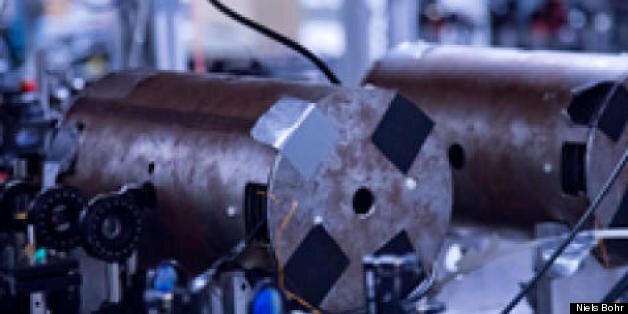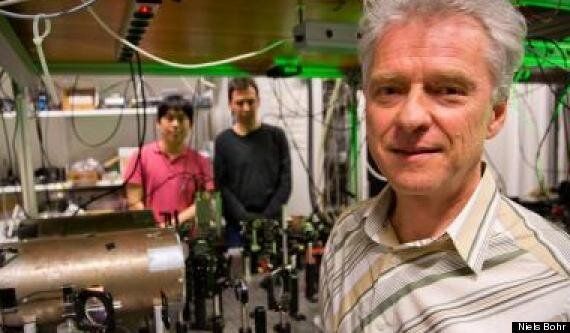
Stop us if you've heard this before, but scientists have made a breakthrough in teleportation - and this time it could lead to commercial applications for the technology, including Earth-to-satellite teleporters.
(Just for sending information, sadly. Not astronauts.)
Researchers have been able to teleport information from light to light for many years, and in 2006 researchers at the Neils Bohr Institute were able to teleport between light and gas atoms.
But now the team has gone one step further - teleporting information between two clouds of gas atoms, and being successful "every single time".
Described in the journal Nature Physics, the technique takes advantage of a quantum phenomenon in which a laser light and gas atoms become "entangled" when the former is fired into the later.
The experiment works (roughly) like this: two glass containers, containing billions of cesium gas atoms, are enclosed in a chamber with a magnetic field.
When the laser light (set to a certain wavelength) is fired into one chamber, the outermost electrons in the gas atoms "react like magnetic needles", and point in the same direction (either up or down, or 1 and 0 in digital terms).
The gas emits photons, or light particles, which contain this quantum information. That light is sent on to the other container, where the information is "read by the light" and registered by a specially-made detector. The signal is then sent back to the first container - completing the teleportation from the second to the first.
The result is that information is sent from one chamber to the other, with no physical link between them.
Currently the technique only has a range of about 50 cm - meaning it's hardly ready for commercial application. But in principal the team says its possible to use the same idea on large scales.
"We could increase the range if we had the space and, in principle, we could teleport information, for example, to a satellite," said Eugene Polzik, professor and head of the research center Quantop at the Niels Bohr Institute at the University of Copenhagen.

Above: Professor Eugene Polzik